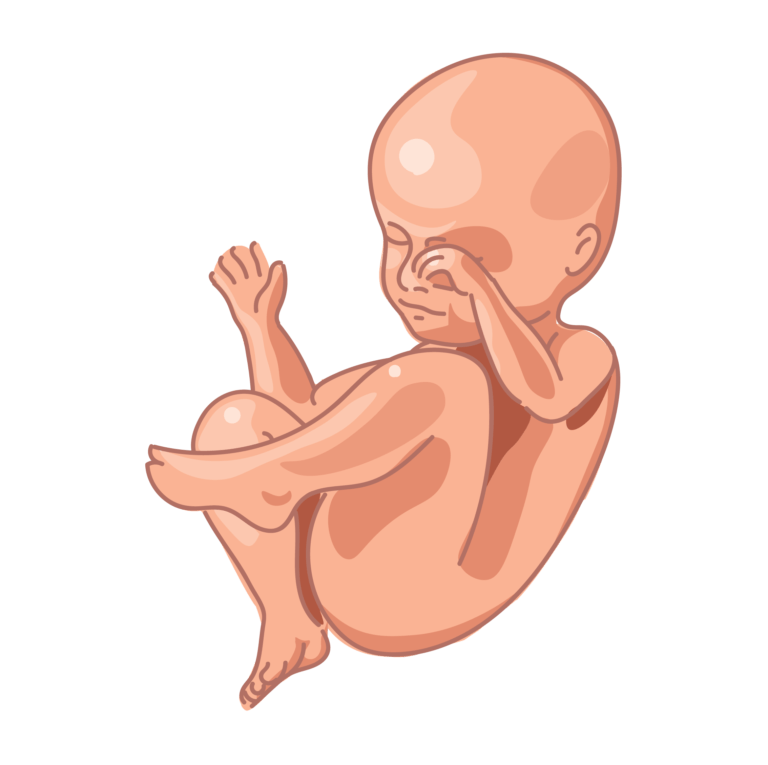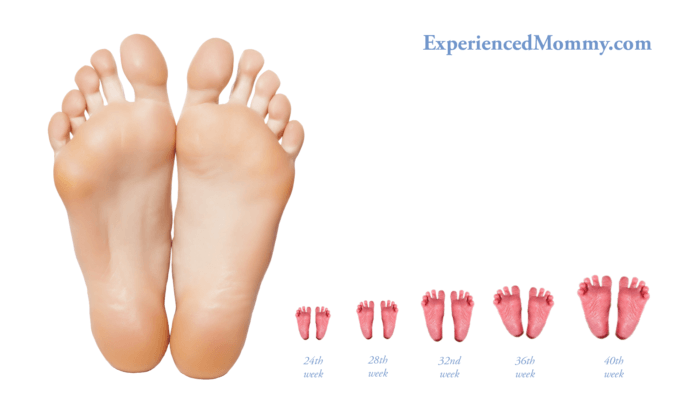 Congratulations! You’re expecting! In addition to breath-taking excitement, you may be overwhelmed with questions about what to expect during your pregnancy. This is especially true for first-time parents. Below, we have provided all the answers to your questions about prenatal development.
Congratulations! You’re expecting! In addition to breath-taking excitement, you may be overwhelmed with questions about what to expect during your pregnancy. This is especially true for first-time parents. Below, we have provided all the answers to your questions about prenatal development.
How does pregnancy begin?
Eggs are fertilized when they unite with sperm forming a cell in the fallopian tube. This new cell is the beginning of an embryo that grows throughout pregnancy.
After fertilization, the cell begins to divide and multiplication occurs as each successive generation of cells continues to divide. It progresses through the fallopian tube and embeds into the lining of the uterus and continues to grow.
On the uterus wall a protective sack forms around the embryo which fills with fluid creating an environment for the further growth of embryo and fetus. Your baby is called an embryo through the eighth week and called a fetus until it is born.
What is the Placenta?
The placenta is an organ designed as a conduit between the mother and baby to provide oxygen, nutrients and hormones to the growing fetus. It also processes waste products from the fetus. It is round and flat, shaped like a thick pancake.
What happens to the uterus during pregnancy?
Pregnancy is what the uterus is made for. It will change significantly throughout your pregnancy. As the fetus requires more nourishment, the lining of the uterus will become thicker. The blood vessels will grow in size and capacity.
The entire uterus will expand to make room for the growing fetus, and continue to expand as your baby grows.
How long is pregnancy?
Pregnancy lasts about 40 weeks. This works out to about 9 calendar months plus a week. Consider that there are 13 weeks in each calendar quarter, so it is three quarters plus a week. This is the average duration and yours may be shorter or longer.
The calculation of the start date of your pregnancy used by physicians is two weeks after the first day of your last menstrual period (LMP). The due date is 40 weeks from that date.
In truth you are only actually pregnant an average of 38 weeks, but doctors use the 40 week number because of the way the calculate the date.
How are trimesters calculated?
Pregnancy is split into 3 trimesters. Each is roughly 13 weeks long but most people think of it as 3 months.
- First trimester: 0 weeks 13 weeks 6 days (Months 13)
- Second trimester: 14 weeks 27 weeks 6 days (Months 4 7)
- Third trimester: 28 weeks 40 weeks 6 days (Months 79)
How accurate is the estimated due date (EDD)?
Not very accurate. About 5% of babies are born on their due date. The estimated due date (EDD) is more important for tracking the progress of your babies growth rate through the pregnancy. Statistical data is available using the standard 40 week gestational period for the size and weight of babies at each week of the pregnancy. Tracking by week gives healthcare providers a consistent framework to take measurements and administer tests so that results can be accurately compared to those of the general population.
How is the Estimated Due Date calculated?
Your Estimated Due Date (EDD) is 40 weeks after your last menstrual period (LMP). If the LMP is unknown, you can get an ultrasound to find out the size of the baby and estimate the date based on the size of the baby.
For in vitro fertilization, the EDD is based on when the embryo was implanted in the uterus.
What happens in the first 4 weeks of pregnancy?
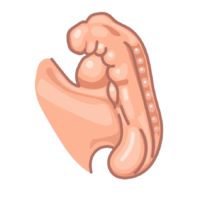
Congratulations! You’re pregnant!
In the first 8 or 9 days after fertilization, the egg moves through the fallopian tubes toward the uterus. This is a slow process and takes about 5 days. In the next 3 or 4 days the egg finds a place to attach and implant in the lining of the uterus. At this point the fertilized egg is called a blastocyst.
The cells have been rapidly dividing and organizing into their specialized functions and locations in the new tiny body. A head begins to form and the rough shape of a face becomes apparent. A mouth, jaw and throat are beginning to take shape.
The miraculous thing is that the little body is only .25 inches long at this point but it holds a tiny, beating heart, not yet externally detectable, not fully formed, but contracting.
What happens during weeks 58 of pregnancy?
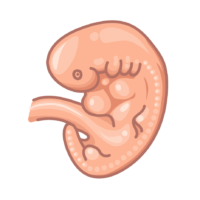
This is a busy month for baby. By the end of this period all of the important organs including eyes have started to develop. The nervous system consisting of the brain, spinal cord and column and nerve system are in place and developing. The head is getting bigger to make room for the brain and will still be big relative to the body through childhood.
The face is coming into shape with little ears and eyelids. Bones have started forming. There are no limbs yet but little nubs where they will be. Genitals also begin development but are not yet identifiable.
At the end of the 8th week the baby is about 1 inch long and weighs a little less than a gram. You can detect the heartbeat around the 6 week.
What happens during weeks 912 of pregnancy?
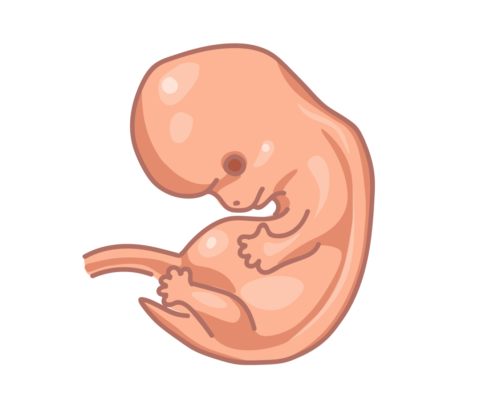
Baby continues to grow all over. Fingers and toes poke out with tiny nails developing. Hands and arms develop first followed by the legs and feet.
Muscles, tendons and ligaments begin to attach to the skeletal system. In the tummy, intestines take shape.
The backbone has been evident for some time but the joints have developed such that it is now flexible.
What happens during weeks 1316 of pregnancy?
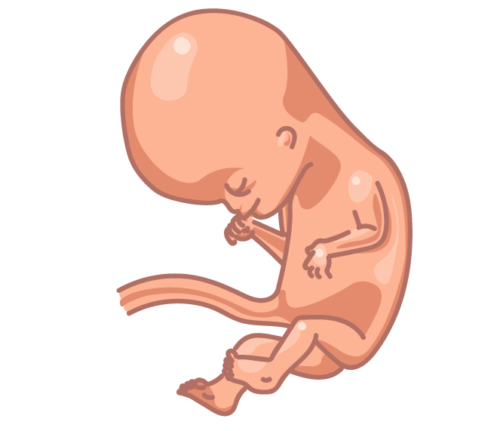
At the end of 16 weeks, your baby looks like a baby with the body and limbs mostly formed and shaped. The baby is moving and able to open its hands and mouth. The feet, toes, hands and fingers are fully formed and you can see the neck distinct from the body.
Ears have taken shape and eyelashes, eyebrows and nails continue to grow.
Organs that began developing in the previous month are now beginning to perform their prescribed functions. The heart is pumping blood through the circulatory system. The urinary system is producing waste and the liver is producing bile. Ears are hearing! Genitals are just beginning to become apparent.
The placenta has developed fully and working hard to supply the fast-growing baby. From the end of the 8th week to the end of the 16th week, the baby has grown 30 times bigger. It is now 1 ounce and 4 inches long.
Miscarriages are less common at this point as most of the baby’s critical development is completed.
What happens during weeks 1720 of pregnancy?
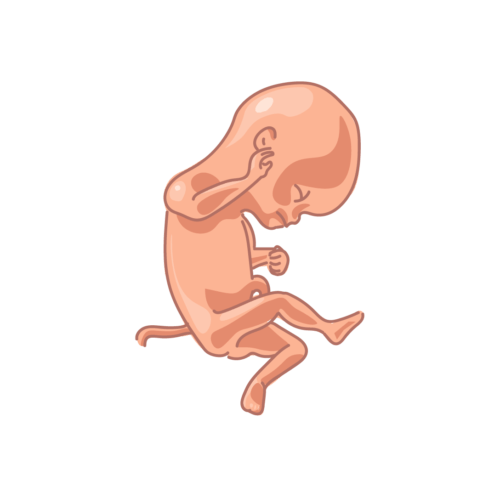
You may be able to feel the baby move. It is becoming more active. Babies can suck their thumbs, move their limbs, yawn and have facial expressions. Baby sleeps and wakes. The heartbeat may be heard through a doppler device.
Genitals are developed to the extent that they can be seen on an ultrasound. Female babies now have eggs of their own in their reproductive systems which have developed.
Sking has been present from early on but is now coated with a waxy substance called vernix caseosa and lanugo which is very thin hair. These protect the skin from abiotic fluid and comes off before birth when it is unnecessary.
Fingers and toes have become fully formed. Bones and teeth continue to grow and thicken. Hair, including eyebrows and eyelashes are formed and fingernails and toenails continue to grow.
The nervous system is working allowing for feeling and stimuli to be processed by the brain.
At this stage, baby is about 6 inches long and weighs 4 ounces.
What happens during weeks 2124 of pregnancy?
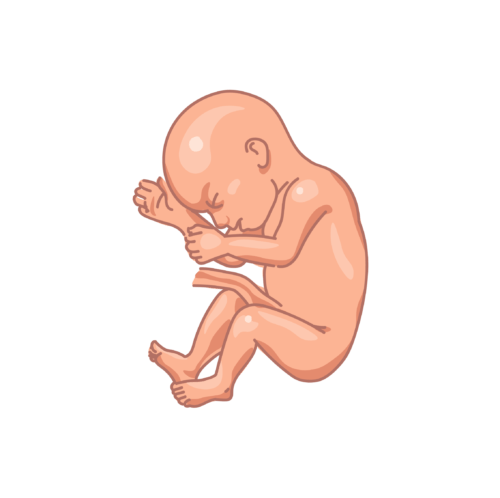
Baby’s muscles are growing and she is using them! You will probably feel baby moving quite a bit, exploring their new limbs. The baby can even open and close its eyes.
The brain is active and growing. Lungs are developed but not functioning. Fingerprints have formed.
Baby is about 10 inches long and 8 to 16 ounces. 23 weeks is a milestone as a premature baby may survive in intensive care if born after this week.
What happens during weeks 2528 of pregnancy?
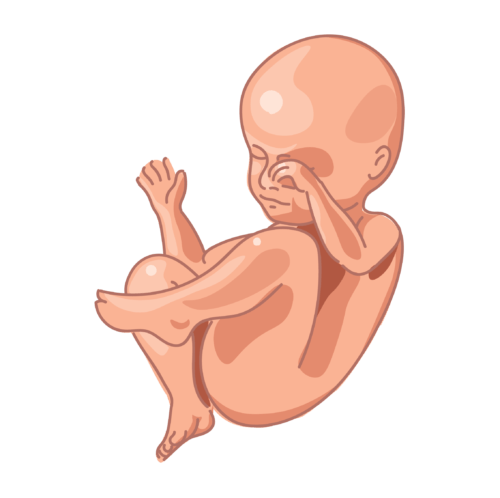
At this point the baby can respond to its environment. The eyes can close in response to light and the baby is capable of responding to sound. The baby is becoming more active, stretching, pushing and kicking. The lanugo goes away.
By 28 weeks baby is about 12 inches long and weighs about 2 pounds.
What happens during weeks 2932 of pregnancy?
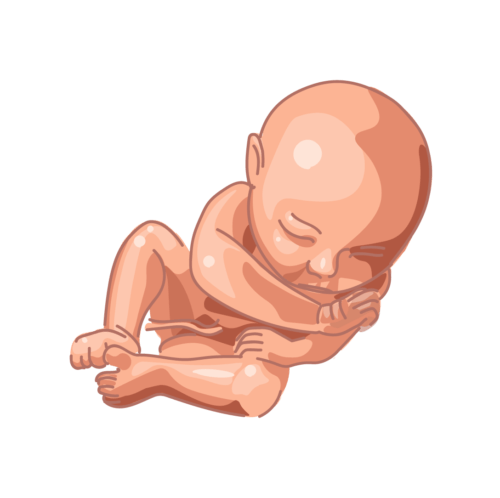
Baby is now moving around in the amniotic sack. The amniotic fluid level is decreasing. The sense of taste has developed to the extent that the baby can distinguish sweet from sour. The baby has a fully developed sense of hearing. As these senses developed, so has the brain. It is able to process the new data it is receiving.
The baby continues to gain weight from muscle, bone and fat. The major systems are all developed and baby is in growth mode. At 32 weeks baby will be about 14 inches long and 2 to 4 pounds.
What happens during weeks 3336 of pregnancy?
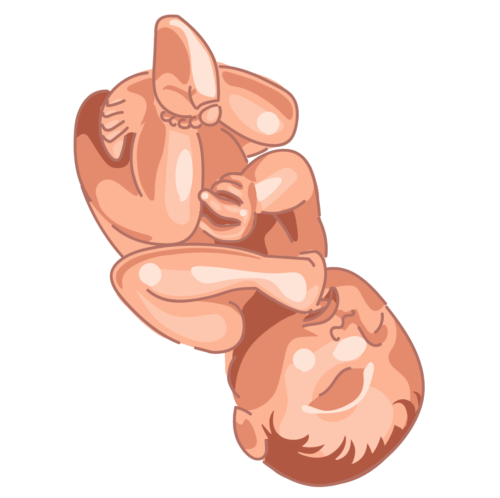
The baby doesn’t use its lungs until birth but they are almost ready for show time. Lung function is the key challenge for premature births.
As your baby continues to grow, it will also keep up the moving and activity. Although baby may still be chaging positions in the womb, it should be tending toward a head-down position readying for birth. Other organs also continue to grow and develop.
Baby is sleeping more and developing a sleep pattern. The skin is flattening from its wrinkled state. At week 36, baby is around 18 inches long and weighs around 4 to 5 pounds.
What happens during weeks 3740 of pregnancy?
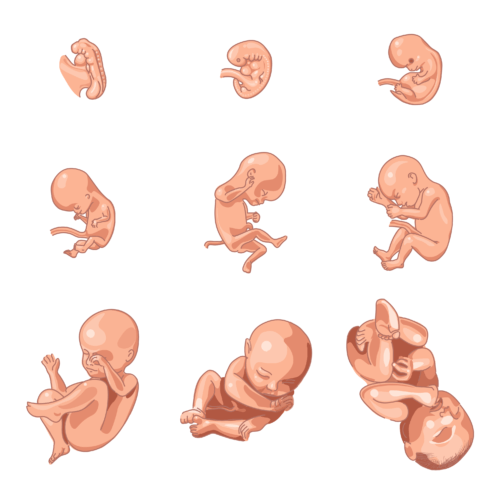
Your baby not only continues to grow but his or her functions are becoming fine-tuned. Reflexes and fine motion like blinking, hand squeezing and head-turning are starting to occur. Baby is responsive to stimuli like light, sound and touch.
Your baby’s fat reserves grow and overall the weight can grow at the rate of 1/2 pound per week, which explains why you are so hungry! Baby is 18 to 20 inches long and 6 to 8 pounds.
You will be able to sense pressure as the baby moves head-down toward the birth canal.
Adverse Factors Affecting Fetal Development
Fallopian Tube: The pair of tubes connecting the ovary and uterus.
Fertilization: When the egg and sperm join to form one cell.
Fetus: The name given to the baby from the ninth week of pregnancy until birth.
Gestational Age: The length of the pregnancy in weeks as measured from the last menstrual period.
Hormones: Chemicals produced in endocrine glands that signal or regulate functions in various organs of the body. Estrogen is an example of a hormone that influences the function of female reproductive organs.
In Vitro Fertilization: The process of manually fertilizing a female egg with a sperm in a laboratory environment and placing the fertilized cell in the uterus of a woman to begin a pregnancy.
Oxygen: A gas required by cells for life.
Placenta: A tissue formed in pregnancy that serves as a conduit between the mother and fetus for providing nutrients and removing waste products.
Sperm: A reproductive cell formed in the male body that joins with a female egg for fertilization.
Trimesters: Common term for the 3 thirds of a pregnancy.
Ultrasound: A device which creates a visual image of physical structures in the womb via analysis of sound waves.
Uterus: The organ that contains and sustains the fetus during pregnancy located in and above the female pelvis.
